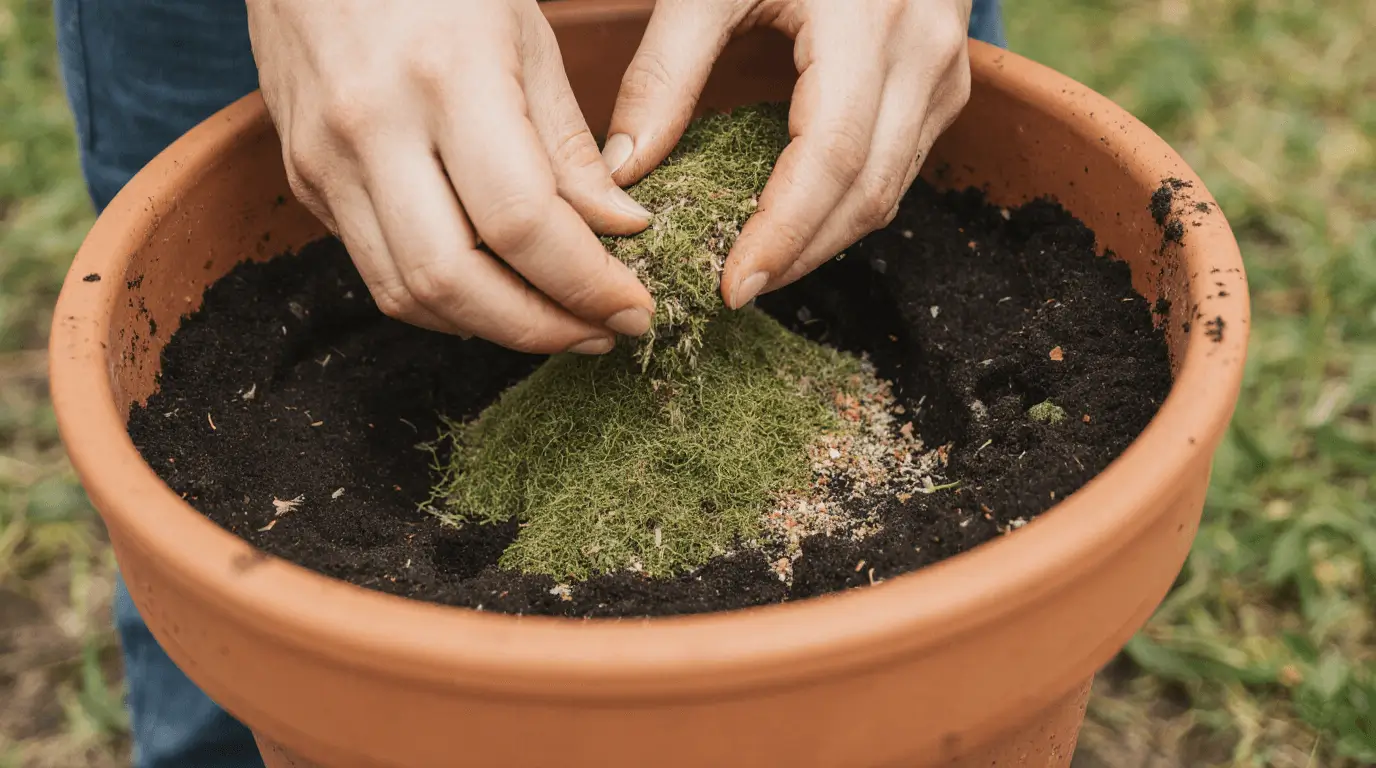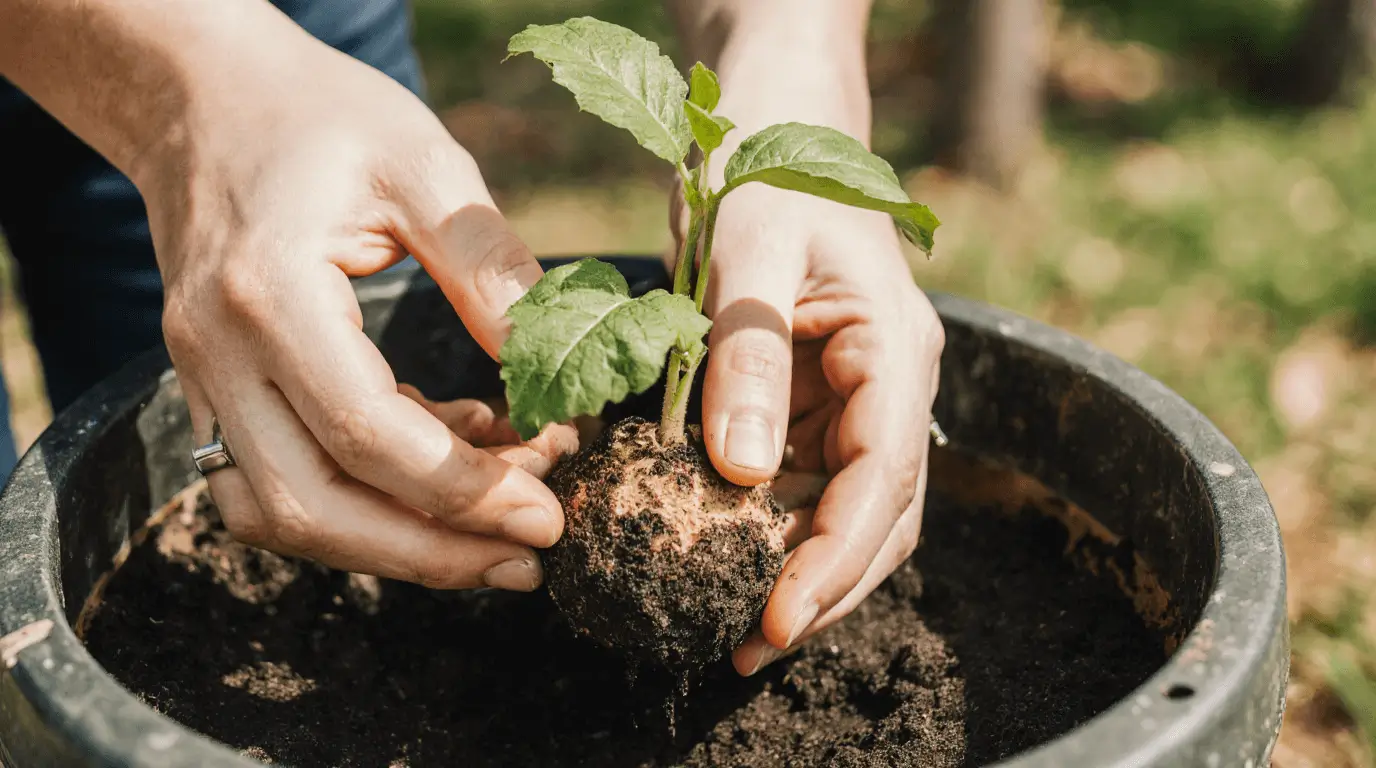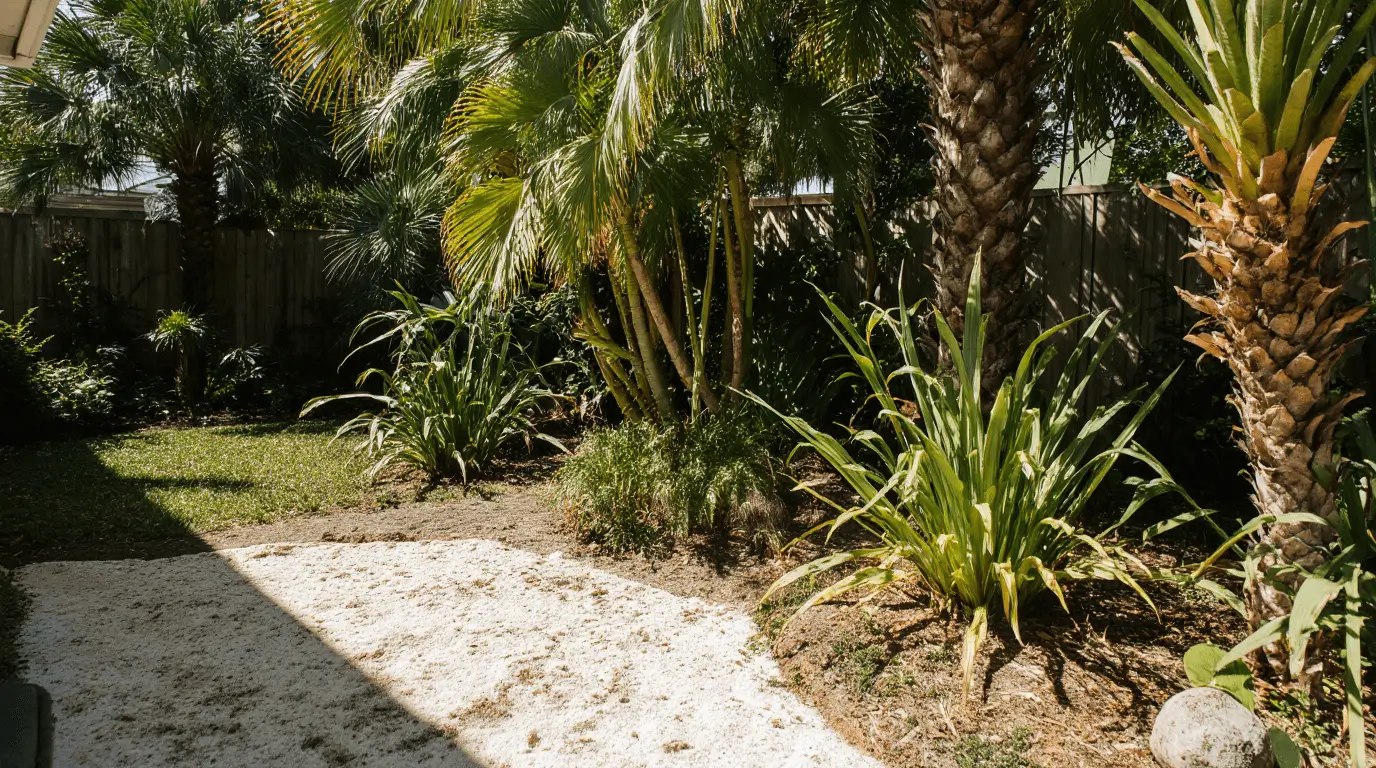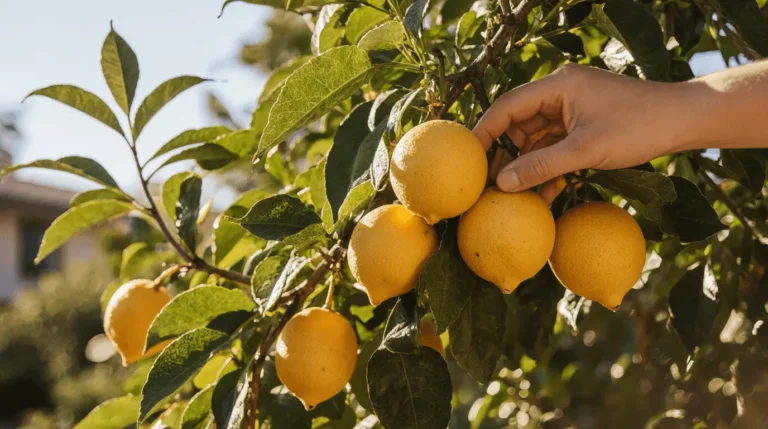The miracle berry is truly one of nature’s wonders, known for its unique taste-altering ability that turns sour foods sweet. These small red berries, also called miracle fruit, contain a compound called miraculin, which causes a temporary taste alteration by changing how your tongue senses flavors. I first tried this tropical fruit at a local fair in Florida, and the flavor enhancement amazed me — lemons tasted like candy, and vinegar became almost pleasant. Beyond the fun of taste-tripping, these miracle berries have real health benefits. They are packed with antioxidants, support healthy eating, and can be a great sugar substitute for people following a low-sugar diet or recovering their taste perception after medical treatments, especially when learning how long does miracle fruit last for best flavor and effectiveness.
As a gardener, growing this tropical gem is both easy and rewarding. The miracle fruit plant is an edible plant that thrives in tropical gardening or a warm subtropical climate. You can grow at home as an indoor plant or outdoor plant depending on your space. It needs rich soil conditions, good humidity, and proper sunlight to grow well. When I started its cultivation, I followed a step-by-step guide that included correct watering, balanced fertilizer, and organic compost. These methods ensured sustainable growth, improved fruit care, and gave me the most delicious taste experience straight from my home garden.
Read Also: 7 Amazing Uses of Soursop Leaves for Natural Healing
Key Growing Tips and Benefits
- Maintain slightly acidic soil mix and ideal pH level for strong fruit plant growth.
- Keep steady watering schedule and monitor humidity for better fruit cultivation.
- Provide gentle sunlight and follow proper care instructions to boost nutrition and fruit benefits.
- Try propagation or pruning regularly for better sustainable growth and shape.
- Enjoy culinary uses, creative recipes, and fun food pairings that highlight its unique flavor.
- Follow storage and safety steps to preserve its effects duration and maintain flavor experience.
- Adopt organic gardening practices, improve nutrition, and enjoy a healthy lifestyle with this health-conscious and dietary support fruit.
Read Also: Fast Producing Fruit Trees, Shrubs & Vines
🍓 What Is a Miracle Berry?
The miracle fruit plant, known scientifically as Synsepalum dulcificum, is a unique plant and tropical shrub native to West Africa. Its small red berries contain a glycoprotein called miraculin, which attaches to the taste buds and interacts with flavor receptors, creating a remarkable taste alteration that turns sour flavors like lemons, vinegar, and limes into a sweet taste. This fascinating flavor change gives a unique experience often lasting a duration of about two hours. Many foodies enjoy this miracle berry effect for flavor enhancement, while others use it in low-sugar diets, during chemotherapy, or for taste changes linked to health recovery. Its sweetness perception and sweet illusion are a natural wonder of fruit chemistry, a result of a delicate biological process and sweetness binding studied in nutrition science and sensory science. The tropical fruit also serves as an edible berry, natural sweetener, and dietary aid, supporting healthy eating and offering a fascinating flavor transformation for anyone curious about its taste perception, taste adaptation, and flavor profile — truly an exotic plant born from nature’s most amazing food reaction.
Read Also: 5 Juicy Secrets: Purple vs Yellow Passion Fruit
🤔 How Do Miracle Berries Work?
The miracle berry is famous for its taste-altering effects, and the secret lies in a key compound called miraculin, a type of glycoprotein found in the miracle fruit plant. When this compound touches your tongue, it binds to sweet receptors, changing how they react to acids in sour foods and acidic foods like lemons, vinegar, and grapefruits. This flavor modification creates a delightful sweet taste, transforming the sharpness of sour items into a pleasant sweetness perception. Through this unique mechanism, the taste change usually lasts for a duration of about thirty minutes to two hours, depending on the concentration, pH levels, and overall acidity level of the foods eaten.
Key Facts Behind the Science
- The shape-shifting effect happens at low pH, causing a sour foods reaction that produces a sensation of sweetness.
- Experts in food science describe it as a molecular interaction between acids and taste receptors, creating a sweet illusion.
- The miracle fruit plant has gained popularity among chefs, foodies, and dietitians who use it for creative recipes and to lower sugar intake.
- It’s also a natural support for cancer patients, health-conscious consumers, and anyone exploring natural sugar alternatives for healthy eating.
From my own trials with this fascinating fruit, the miracle berry effect feels like magic backed by pure science. Even researchers such as Dr. Linda Bartoshuk from the University of Florida study its taste interpretation, showing how the sugar-free sensation aligns with true food science and opens doors for better flavor experiences.
🌿 Are Miracle Berries Safe?
From my own experience growing and tasting miracle berries, I can confirm they are safe to consume when enjoyed in moderation. These natural fruit gems are completely non-GMO and contain no artificial sweeteners, making them a healthy choice for those seeking a natural ingredient to explore flavor change without added sugar. However, because of their taste alteration and temporary effect, it’s wise to practice thoughtful consumption and follow dietary caution to maintain a balanced diet. Their safe usage depends on personal tolerance and portion size — keeping a sensible consumption limit ensures that this edible fruit remains a joy to try while supporting responsible eating and promoting food safety for everyone.
💪 Miracle Berry Benefits
The miracle fruit offers amazing health benefits thanks to its taste-altering magic and rich nutrition. Packed with antioxidants, it supports blood sugar control, aids digestion, and boosts immune support for overall wellness. As a natural sweetener, it encourages healthy eating, helps with weight management, enhances flavor perception, and promotes a healthy lifestyle through its phytochemicals, natural compounds, and powerful therapeutic properties that balance metabolism and improve nutrient absorption.
1. Blood Sugar Management
Recent animal studies show that miracle fruit can help regulate blood sugar by improving insulin sensitivity and supporting metabolic health. In diabetic rats, the miracle fruit extract enhanced blood sugar control more effectively than metformin, a common diabetes medication, leading to better glucose levels and sugar regulation. This experimental research in medical studies highlights its therapeutic potential for maintaining sugar balance, improving insulin activity, and promoting long-term diabetic health through natural nutritional science and stable metabolism.
Read Also: Health Benefits of Blue Java Bananas
2. Cancer Support
The plant extract of miracle fruit contains powerful antioxidants such as flavonoids and terpenoids, which may help inhibit growth and reduce spread of cancer cells, including malignant cells found in colorectal cancer. Through in vitro studies, scientists have discovered that these bioactive compounds show strong anti-cancer properties by providing cellular protection against oxidative stress and free radicals. This supports tumor inhibition and plays a vital role in cancer prevention. Ongoing medical research explores its therapeutic effects as a natural treatment and potential cancer therapy. Thanks to its rich phytochemicals, the fruit contributes to disease resistance and aligns with the principles of health science for better overall wellness.
Read Also: 7 Secrets to Growing a Lychee Tree in Your Zone
3. Gout Relief
The miracle fruit extracts offer a natural option to help manage gout by lowering uric acid levels and easing gout symptoms through their strong anti-inflammatory effect and antioxidant properties. This natural remedy supports pain management, promotes uric acid reduction, and restores metabolic balance, making it a safe alternative medicine for holistic health and wellness support without harmful side effects.
4. Taste Restoration for Chemotherapy Patients
During chemotherapy, many cancer patients struggle with taste impairment and loss of food enjoyment. The miracle fruit supports taste restoration by improving taste perception and flavor recovery, offering real appetite improvement, better nutrition, and overall patient wellness. Its natural flavor enhancement and flavor stimulation bring back eating satisfaction, aiding oral health, dietary support, and health recovery while easing treatment side effects through effective medical nutrition therapy and holistic oncology support.
The miracle berry goes beyond its fun taste trick — it offers real health benefits that support dietary wellness and make healthy eating more enjoyable.
- It acts as a natural sweetener, allowing a sugar-free way to enjoy treats without guilt.
- Helps chemotherapy patients by masking metallic taste and supporting better taste restoration.
- Turns sour foods and bitter foods into delightful flavors for picky eaters, improving food enjoyment.
- Encourages balanced low-calorie diets while providing an appetite boost for overall well-being.
🍽️ Culinary Uses and Pairings
When I first tried miracle berries, the flavor-tripping experience completely changed how my taste buds and tongue reacted to sour foods and acidic foods, turning them into a sweet taste adventure. This flavor transformation opens endless culinary experiment opportunities for creative cooking and fun food pairing at home.
- Try citrus fruits like lemons, limes, and grapefruits for a refreshing sweet transformation.
- Experiment with vinegar-based dishes or apple cider vinegar to enjoy a smooth, tangy-sweet twist.
- Taste cheeses such as goat cheese and notice how it turns into a creamy cheesecake flavor.
- Balance spicy foods for a gentle heat balance that enhances the flavor experience.
- Mix Greek yogurt with sour oranges for a rich dessert-like taste.
- Explore unique flavors in food experience through flavor enhancement and sensory taste.
- Practice flavor perception by pairing sweet and savory elements for surprising results.
- Use miracle berries in small gatherings for a shared culinary experiment that sparks laughter and amazement.
🧪 Miracle Berries and Alcohol: Do They Mix?
When paired correctly, miracle berries can completely transform your drinking experience. The miraculin in these berries doesn’t affect alcohol absorption, but it changes flavor perception and creates an exciting taste-tripping adventure. During a tasting party or social event, your taste buds experience a surprising flavor alteration — sour cocktails like margaritas, whiskey sours, or mojitos suddenly gain a sweet flavor and sugary edge, making every sip unique.
- Try gin and tonic, vinegar-based shrubs, or bitters for a smooth mellow taste and perfect flavor balance.
- Experiment with lemon juice, lime wedges, sour candies, or ACV to feel the sweet transformation firsthand.
- Mix up a cocktail flavor session through beverage mixology, culinary creativity, and taste exploration with friends for a fun bar experiment.
Whether for drink pairing or playful sensory experience, these berries turn any fun tasting moment into a burst of flavor enhancement and sensory play.
🍇 How Long Do Miracle Berries Last and How to Eat Them
To enjoy fresh miracle berries at their best effect, it’s ideal to follow the right consumption time, usually within 2–5 days after harvest. For longer use, freeze-dried options like miracle berry tablets provide a longer shelf life and consistent potency with better flavor retention and nutrient retention. Proper storage, preservation, and berry care are key to maintaining freshness, taste stability, and fruit quality, so always follow a careful consumption guide and use gentle handling and packaging for perfect results.
🧊 Storage Tips
- Always keep fresh berries refrigerated to maintain their natural flavor and extend freshness.
- Store freeze-dried tablets in airtight containers to protect them from moisture and preserve quality.
- Avoid exposure to heat or humidity since it can reduce potency and spoil the berries faster.
How to Eat Miracle Berry
- Place the berry or tablet on your tongue and let it dissolve slowly — don’t chew to preserve the miraculins effect and ensure full flavor transformation.
- After it dissolves, try acidic foods or sour foods within 30 minutes for the best taste experience and noticeable sweet sensation.
- The effect duration usually lasts 2 hours, depending on berry quality, individual sensitivity, and proper timing of your consumption process.
This simple proper method enhances your taste buds response, creating a unique flavor change and unforgettable taste alteration through a natural sensory reaction.
🌱 How to Grow a Miracle Fruit Plant
Growing a miracle fruit plant is an exciting part of home gardening, especially if you live in a warm climate or humid climate where it can truly thrive. From my own plant care experience and tips shared on Gardening Know How, maintaining the right environment and soil composition makes all the difference. The plant prefers acidic soil with a pH level between 4.5 to 5.8, using a mix of peat moss and perlite for ideal drainage and well-aerated soil.
- Keep it under partial shade or full sun for 4–6 hours light to encourage healthy growth condition.
- Maintain a temperature range of 68°F to 86°F (20°C to 30°C) and ensure humidity maintenance with a humidifier or pebble tray.
- Focus on moderate watering, proper aeration, and environmental balance to support good fruit production and berry yield.
- For Florida growers, communities like Tropical Fruit Forum and Let’s Grow Florida recommend an acidic base for better tropical growth and plant health.
During dry months, shift to indoor growing or use a greenhouse to help the plant adjust to seasonal change, promoting strong propagation, improved fruiting, and lasting success in tropical gardening through mindful horticulture and climate adaptation.
🪴 Summary: Miracle Fruit Plant Growing Conditions
- Use acidic soil and well-drained soil with a pH 4.5–5.8 to help the miracle fruit plant grow healthy.
- Maintain high humidity and follow a moderate watering routine to keep the humidity level stable.
- Provide partial shade or filtered sunlight with a temperature range of 60–85°F for the best growth requirements.
- For indoor gardening, ensure proper lighting using a grow light to mimic subtropical sun and maintain good climate control.
Pro Tip: From my experience in horticulture, consistent plant care and close attention to environmental factors like light conditions and soil drainage can make all the difference in successful cultivation and tropical environment growth.
🧑🌾 How to Take Care of a Miracle Fruit Plant
The miracle fruit plant is quite easy to care for once you understand its needs. Based on Gardening Know How and my own gardening experience, the key is maintaining consistent moisture and acidic soil for healthy growth. This low-maintenance plant thrives with the right mix of water balance, nutrients, and light exposure, ensuring strong fruit production and beautiful foliage year-round.
For best results, use filtered water or rainwater to avoid mineral buildup, and maintain humidity control using a humidifier or pebble tray if you’re an indoor gardener. Apply an mberry balanced fertilizer, preferably a water-soluble fertilizer (20-20-20), every two weeks during the growing season to encourage berry production and healthy growth. Proper soil management, watering schedule, and nutrient balance are essential for long-term plant care and environmental care — a rewarding tip for any horticulture enthusiast.
Caring for This Plant Is Fairly Straightforward
- Keep the soil moisture level lightly moist by following a steady water schedule—around 2–3 times per week or when the top inch is dry. This helps your miracle fruit plant maintain good plant health and balanced soil condition.
- Watch its temperature sensitivity closely; anything below 40°F can harm it. During cold spells, always bring indoors for proper cold protection and temperature control—a must for long-term plant maintenance.
- Add Epsom salt in small doses if you notice magnesium deficiencies to promote nutrient correction and maintain balanced nutrients. Careful indoor watering and consistent moisture level are vital for healthy home gardening and indoor care.
🌼 How to Plant Miracle Fruit
Planting a miracle fruit plant is a rewarding process that requires the right care and patience. These tropical shrubs adapt easily to containers and do well in both indoor environments and outdoor environments with proper environmental adjustment. For better plant growth, focus on good plant setup, container gardening, and consistent attention to home cultivation—a simple horticulture practice that leads to real growth success in tropical gardening.
🌿 Step-by-Step Guide to Planting
- Choose a container such as a 3-gallon pot or large pot with proper drainage holes. Both clay pots and plastic nursery containers work perfectly for beginners.
- Use well-draining soil and an acidic potting mix made from peat moss, perlite, and pine bark to promote strong root health.

- Maintain the soil pH between 4.5 to 5.8 using a pH testing kit and, if needed, adjust with sulfur-based amendments.
- Set the plant depth carefully — keep the root ball level with the soil surface and avoid covering the stem base.

- Water deeply after planting, ensuring consistent moisture while preventing overwatering through waterlogging prevention.

- Provide sunlight in partial shade or filtered sunlight, and in colder climates, move the plant indoors before temperatures drop below 50°F temperature.
- Add mulch, ideally pine bark mulch, for moisture retention. Maintain humidity levels with a pebble tray or humidifier for a balanced growing environment.

Pro Tip: For optimal planting, select a wind-protected location with sandy soil—a smart choice for USDA zones 10–11 that supports smooth climate adaptation and long-term plant care.

🌺 Conclusion
Growing a miracle fruit plant is a simple yet rewarding process when you follow the right planting steps. With the right container, soil preparation, and consistent humidity and temperature care, this tropical wonder can thrive beautifully both indoors and outdoors. A little attention to watering and pH balance will reward you with healthy growth and plentiful berries year-round.
Read Also: Gardening & Plant Care Guide for Thriving Plants
🌱 FAQs
Q1: Can I grow a miracle fruit plant indoors?
Yes, it grows well indoors with filtered sunlight and proper humidity control using a humidifier or pebble tray.
Q2: How often should I water it?
Keep the soil lightly moist and water deeply 2–3 times per week depending on your climate. Avoid waterlogging.
Q3: What kind of soil should I use?
Use an acidic potting mix with peat moss, perlite, and pine bark for strong root health and drainage.
Q4: What temperature is best for growth?
Maintain a temperature range between 60°F to 85°F, and bring the plant indoors during colder months.
Q5: Do miracle fruit plants need fertilizer?
Yes, use a balanced water-soluble fertilizer (like 20-20-20) every two weeks during the growing season for steady berry production.




